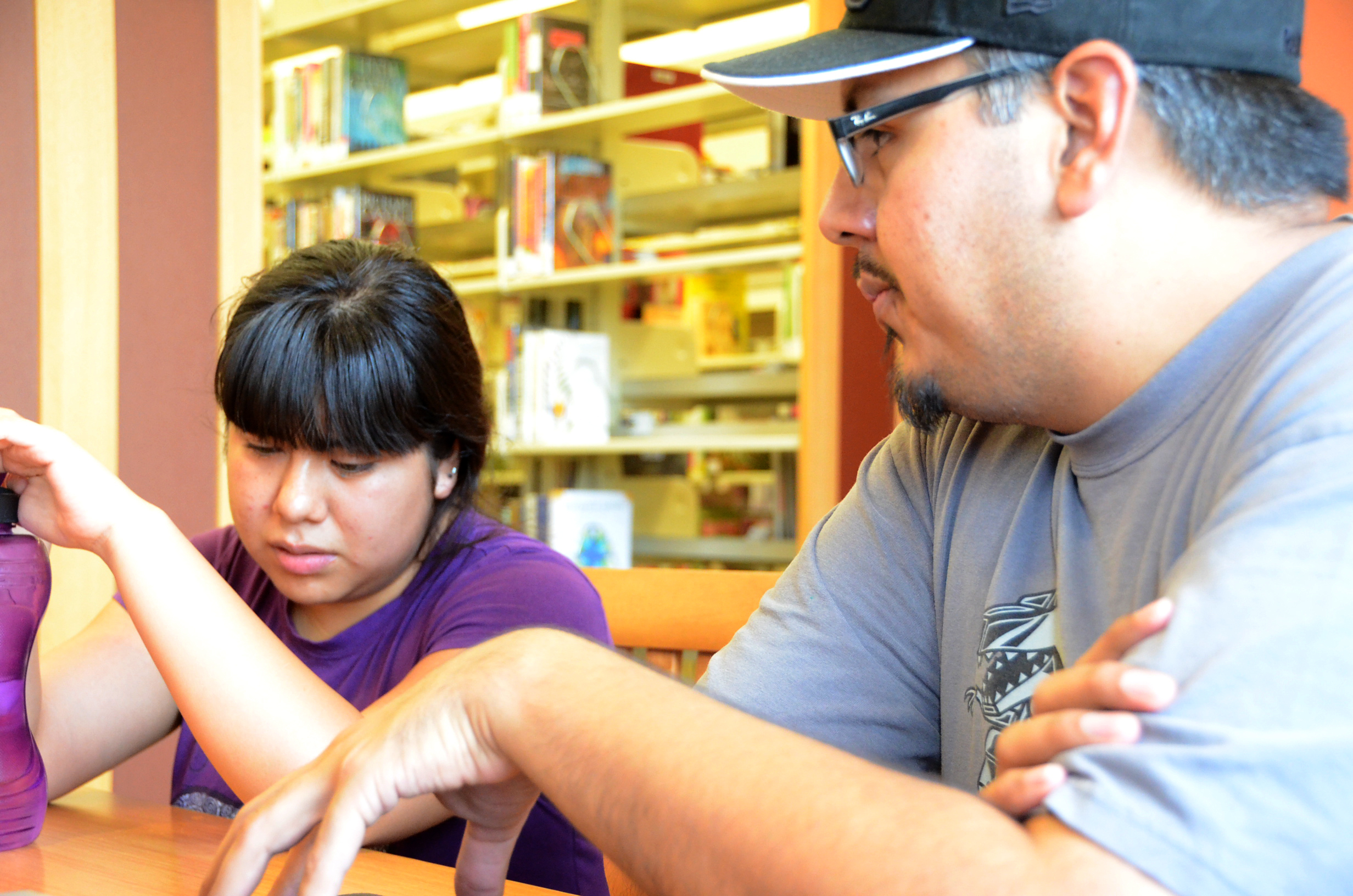 |
| Luis Pichardo and Laura Davila discuss "Snow Queen." |
| Photo by Hillary Jackson |
 |
| Luis Pichardo and Laura Davila discuss "Snow Queen." |
| Photo by Hillary Jackson |
When Laura Davila’s fingers glide across the raised bumps of her BrailleNote, she’s focused. An avid reader and award-winning poet, she carries the device with her everywhere just in case inspiration strikes.
She is still trying to decide how she’ll execute her latest work.
“Maybe if you narrow down your focus on “Snow Queen,” at the core what you want it to say about relationships, maybe that might help you figure out which direction you want it to go,” Luis Pichardo says to Laura Davila, 19, at a back table in the East L.A. Public Library.
“Do you want to try working on it right now?”
“Sounds good,” she says, and the two return to writing.
Davila is one of seven students in Pichardo’s program, DSTL Arts (Develop Skills, Transcend Limits via Arts). Pichardo, a writer, photographer and painter mentors creative youth so they can develop their craft and become working artists.
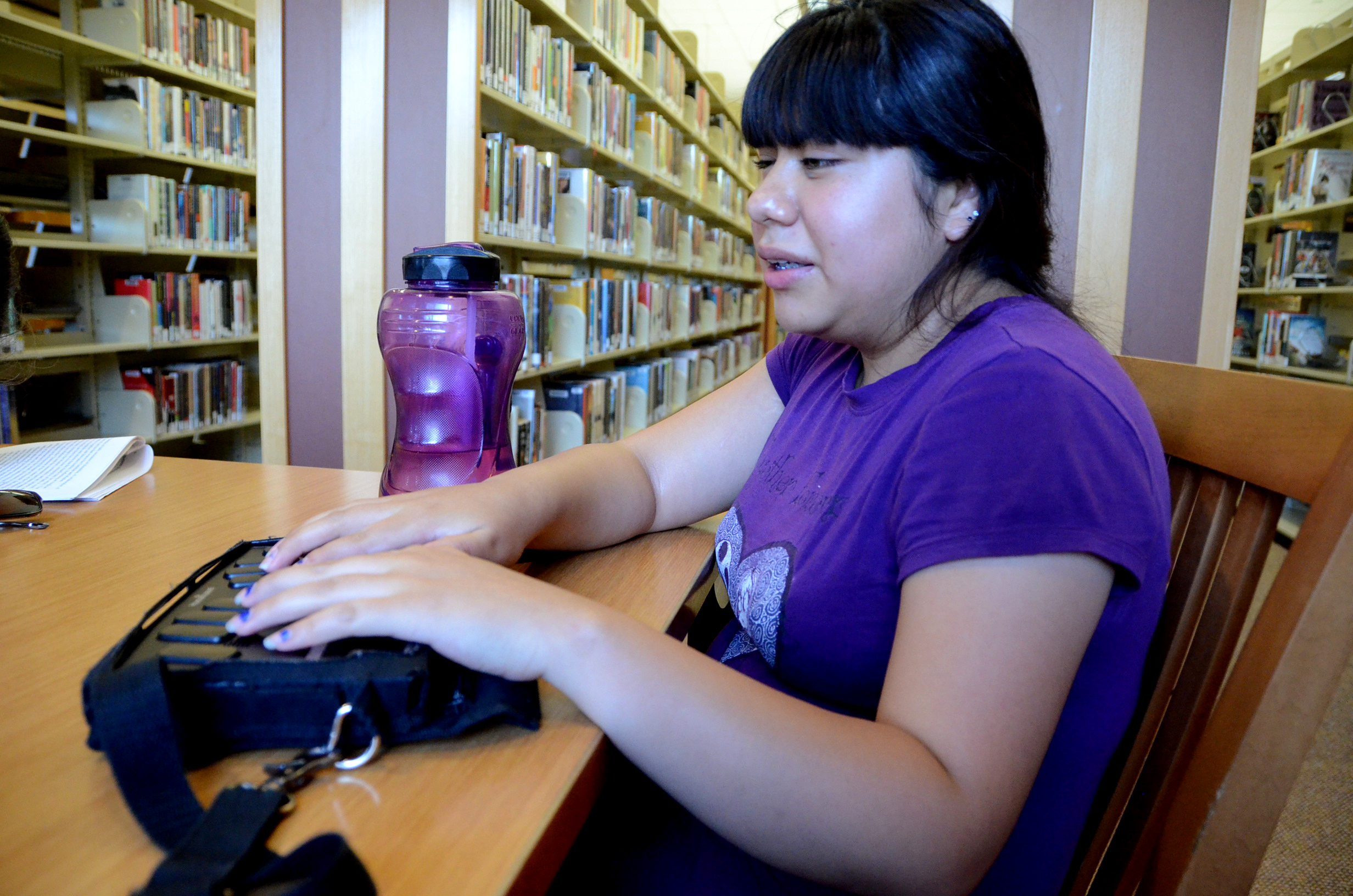 |
| Laura Davila types on her BrailleNote. |
| Photo by Hillary Jackson |
After discussing the movie’s “really bad” deviations from Hans Christian Andersen’s fairy tale with friends, Davila decided to write a version she approved of with her signature urban fantasy element.
She credits her ability to get lost in her own world to her blindness. She lost her eyesight in a firearms accident when she was 6. She doesn’t dwell on the accident now. Instead she navigates the red tape involved with accommodating her blindness, which can be challenging. It comes with lots of paperwork. She hopes to get a guide dog, but that takes time. For now, Pichardo is pushing her to apply for an aide to help her with her entrance exams so she can qualify for the scholarship she needs for school. To hear more about Laura, click here.
Most of the students are referred to the program through teachers Pichardo and his co-founder, Jennifer Fuentes, personally know from Youth Opportunities High School in Watts, and Alliance Media Arts and Entertainment Design High School in East L.A. All students have either a low-income family, individualized educational needs or are in current or past foster care.
Pichardo can relate to students from adverse backgrounds because he’s been there himself. Growing up in a primarily immigrant community in San Diego County, he knows what it’s like to go without resources and face neighborhood pressures. He credits the FBI shutdown of his street’s meth lab for deterring him from joining neighborhood gangs. He also believes the raid, and support from his mom, helped him develop his love for art.
“When I was in high school, after my parents got divorced, art became a much more important part of my life. It helped me express myself more, and get through my days,” he said.“Not really having a person I could talk to about it, I felt isolated a lot of times. It took me a little while to feel like I could make a career as an artist.”
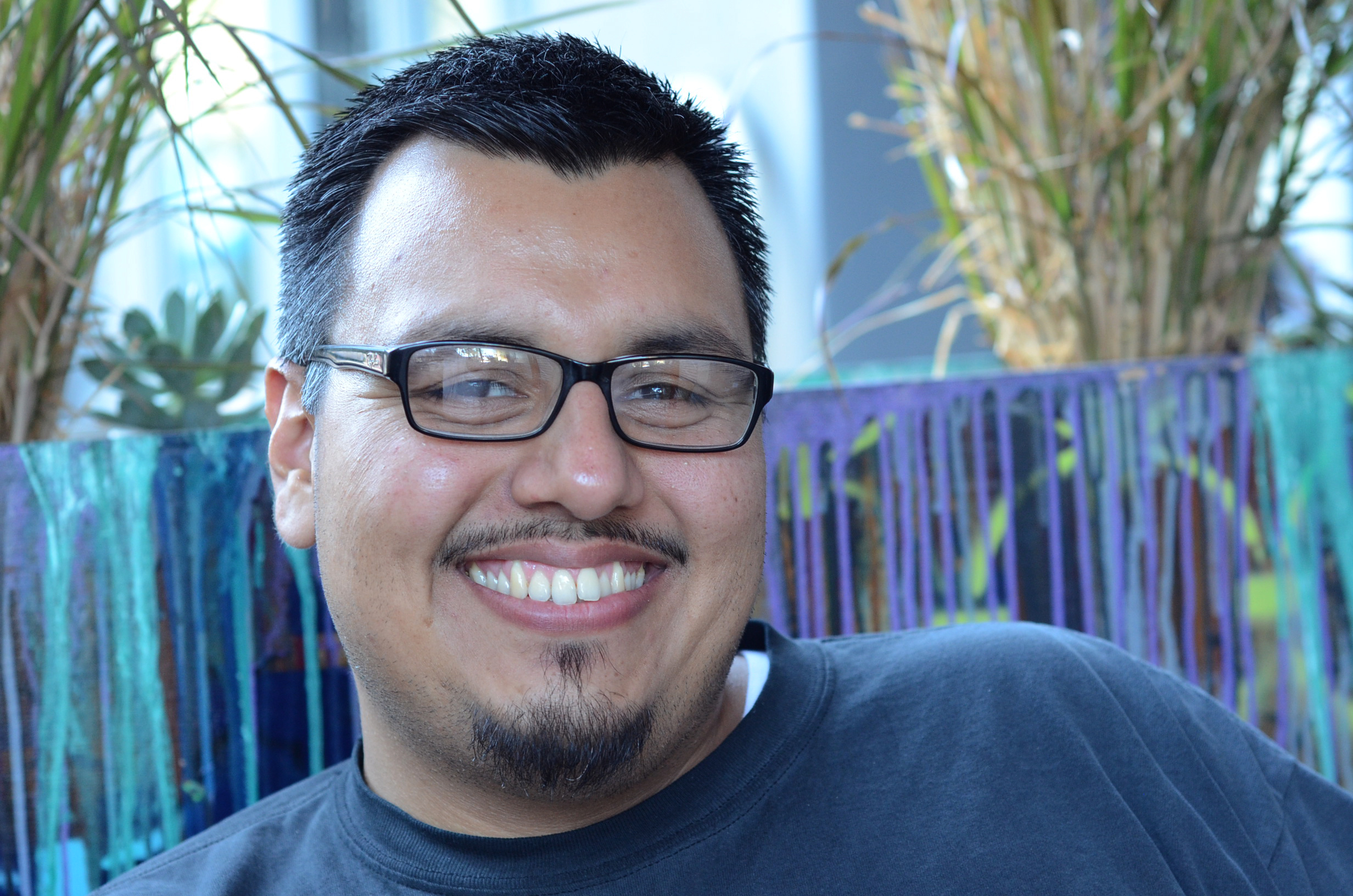 |
| Luis Pichardo is the founder of DSTL Arts. |
| Photo by Hillary Jackson |
He wanted to be someone students from similar backgrounds could talk to. He and his fiancé, a creative writer and English teacher, developed DSTL Arts two years ago to support young artists. Fuentes is the DSTL Arts program director and handles many of the behind-the-scenes details.
They formed DSTL Arts to provide young artists with the support they wish they had at that age. “If we had been mentored while in high school or early in our college life, we probably would've made a conscious decision to pursue the arts as a career,” Pichardo said.
Through the program, Pichardo mentors students interested in creative writing or the visual arts. Unlike other art non-profits, DSTL Arts isn’t focused on cultivating art skills, but further developing them so students can be working artists.
The program operates on a meager budget of $1,000 a year. It’s primarily supported by private donors, gifts from family and friends and the sales of Pichardo's and students' work.
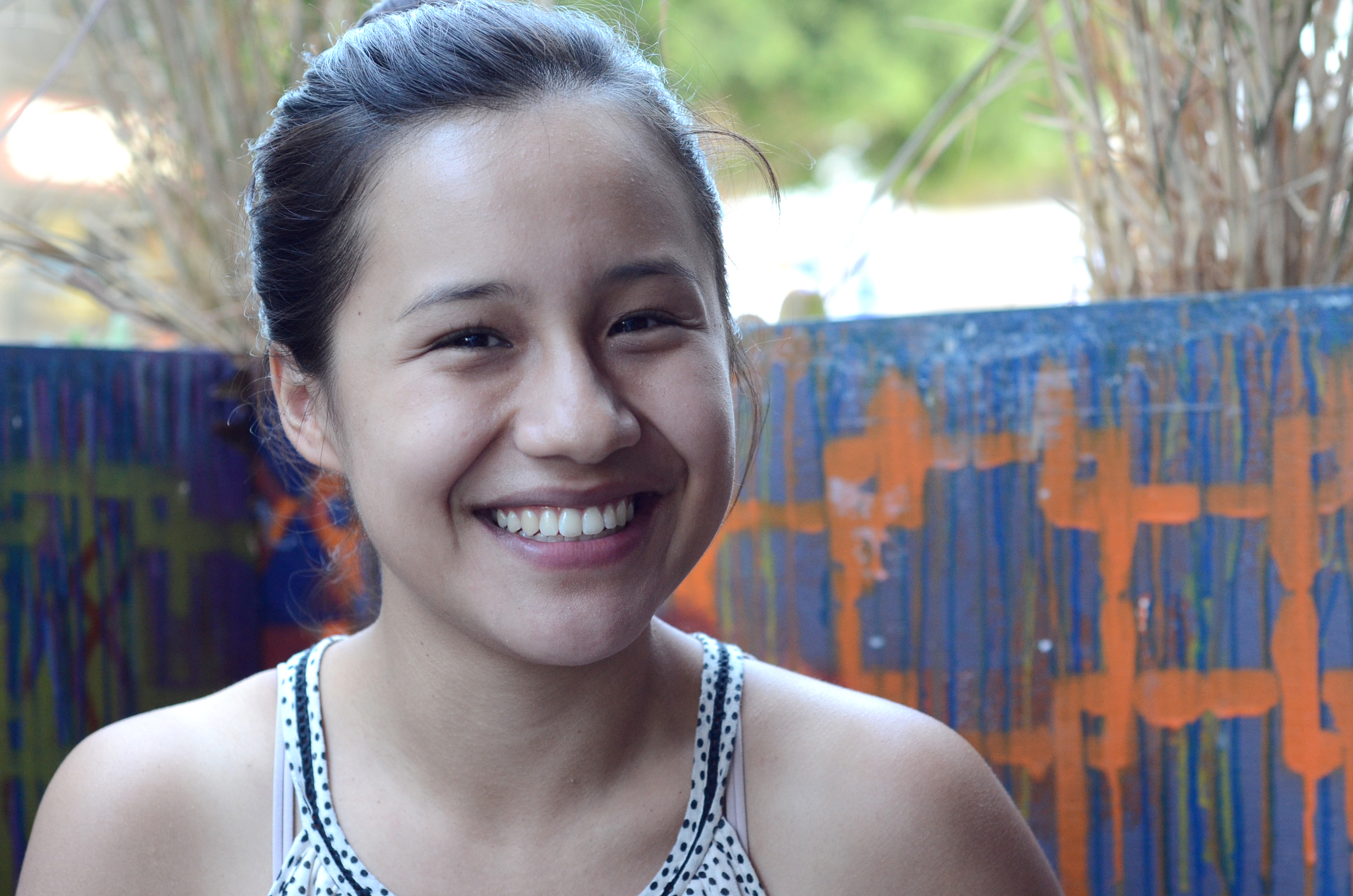 |
| Ana Cristel Rivas is a photographer. |
| Photo by Hillary Jackson |
Pichardo said student art sales have covered the cost of supplies for the past two years. DSTL Arts keeps half of the proceeds and the other half goes directly to the students. The program hopes to expand by partnering with other non-profits. This week DSTL Arts received its 501c3 certification from the IRS, so they will be able to have larger fundraising campaigns, Pichardo said.
Given the program's young age and need for funding, it lacks a central location. Pichardo is mobile. He mostly meets students in public places around the city. Most Tuesdays he picks up Brian Andrade from Union Station, and they meet Ana Cristel Rivas in Little Tokyo. They find a spot like Starbucks review their work and go on photo walks. The two are part of the original three students in the program. The other student joined the military, but is still practicing art.
Even though the program is young, Pichardo has seen what he considers success in his students: growth.
He’s speaking about Cristel Rivas and Andrade when he says he has “seen their work grow exponentially. They have come a very, very long way but not just in their arts practice but in their self-confidence.”
He’s proud of their ability to articulate their visions as artists and promote their own work. Andrade is teaching creative writing to a group of high school students in the community.
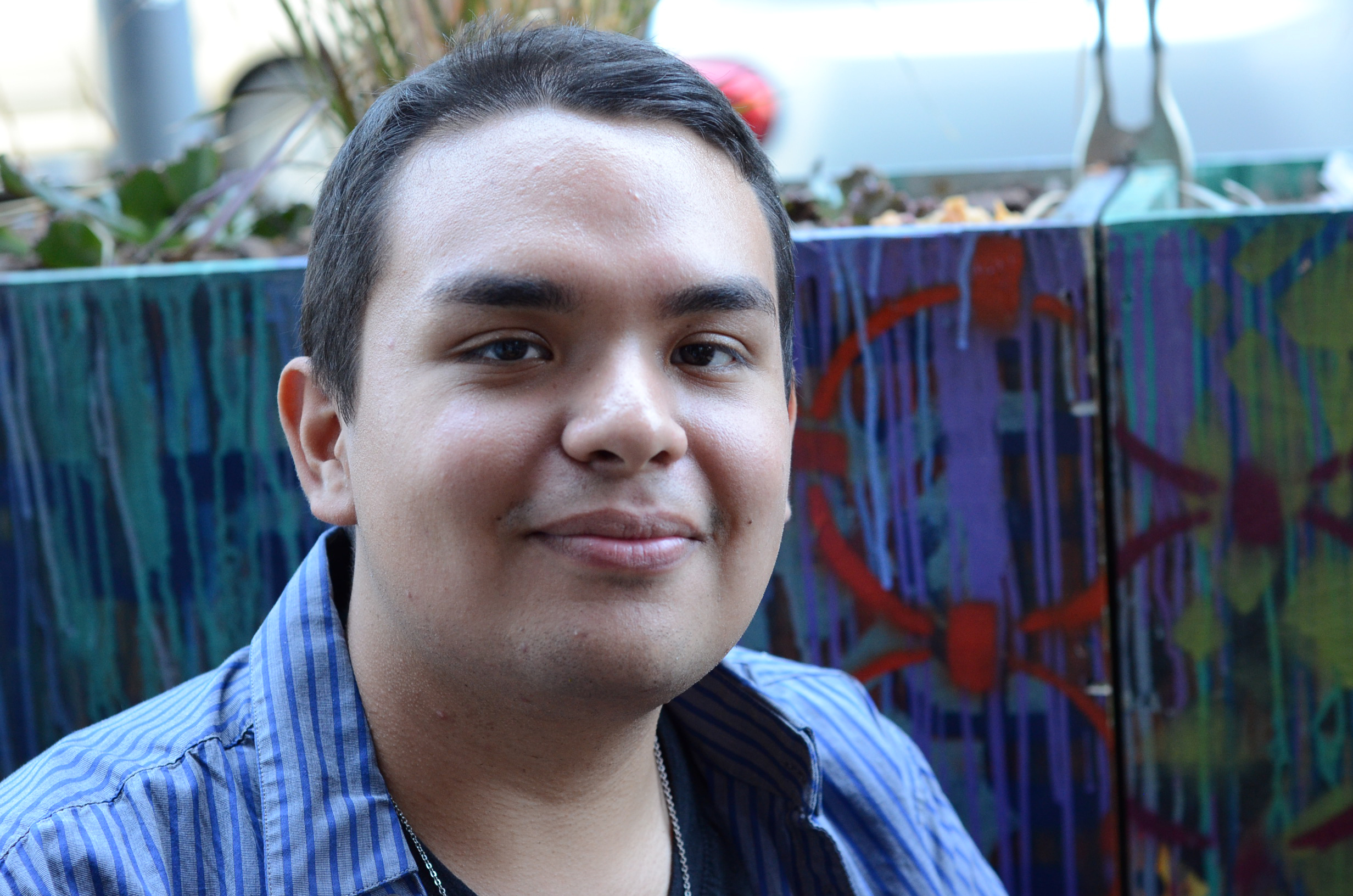 |
| Brian Andrade is a writer in the program. |
| Photo by Hillary Jackson |
But one of Pichardo’s proudest moments came when Cristel Rivas landed her first commissioned work. The multimedia piece included balloons, one of her favorite things. Several creatures held the balloons and instruments.
“The point is we are all creators in a way and we all need each other to make something big, to make something greater than just ourselves,” she said.
She has also worked several events as a photographer and is occasionally contacted by people through Instagram to do photography for them.
For Pichardo, the growth in his original mentees speaks for itself. “It’s a testament of what we’re able to do in a short amount of time we’ve been around,” he said.
Despite their successes, it can be hard for the students’ goals to be taken seriously by their families. Pichardo said that for many low-income families, the arts are appreciated as an activity, but aren’t seen as a viable career option.
“My parents just see it as a hobby,” said Andrade, 19, who is from Los Angeles. “They see it as something that keeps me busy, keeps me out of trouble. I’ve always told them that its something I want to pursue and they sort of just listen but they don’t take it seriously.”
He said his parents switch from job to job and want him to become something more culturally esteemed, like a lawyer. Instead he's in college studying journalism and creative writing at California State, Northridge.
For Cristel Rivas, 20, who is also from L.A. and studies at Pasadena City College, wanting to be an artist is hard because her family wants her to be happy, but they are mostly headed toward the medical field. “My sister is studying to be a psychologist and my brother wants to be a pediatrician, so that leaves me wanting to be a photographer,” she said.
Her dad’s a mechanic and wants her to be happy, but he’d also like her to make a lot of money. “Every time my dad asks me,‘What do you want to be? What exactly are you doing with your life?’ I tell him, ‘I’m doing something right now. I’m trying to sell my artwork,’” she said.
“He just doesn’t understand that because he doesn’t know art, he doesn’t really like art. I’m the one that’s trying to open his eyes and show him that it is something that I’m passionate about and I’m actually making a living of it.”
The cultural dissonance inspired one of DSTL Arts’ founding principles: Teach students how to articulate the value of art as a career.
 |
DSTL Arts meets at the library on Fridays. |
| Photo by Hillary Jackson |
“It’s culturally something that is misunderstood. The arts are not necessarily considered a career path, not in the same way that something like a science-related field is,” he said.
“Most of our parents aspire that for us, but those aren’t necessarily the aspirations that we have.”
His vision is to create a career path for the students. “We [believe in] not just giving them the ability to display and sell their work through our programs, but teaching them the way to go to school to get a bachelor’s degree or MFA in the arts if that’s what they want,” he said.
“The arts are really everywhere in our society, it’s just in how it’s presented. That’s what we’re teaching our students: to be aware, to pick up on these things.”
According to a 2011 report from the Americans for the Arts National Arts Index, there has been an increase of professional artists in the workforce. From 1996 to 2009, the number of working artists increased 17 percent, from 1.9 to 2.2 million. Pichardo knows firsthand: working as an artist can be done.
After the owner loved her first commissioned piece, Cristel Rivas knows it, too.
“It made me feel like there’s a reason for doing art. A reason to continue because someone believes in me,” she said.
“Someone is paying me to do something that I love. It’s a really good feeling.”